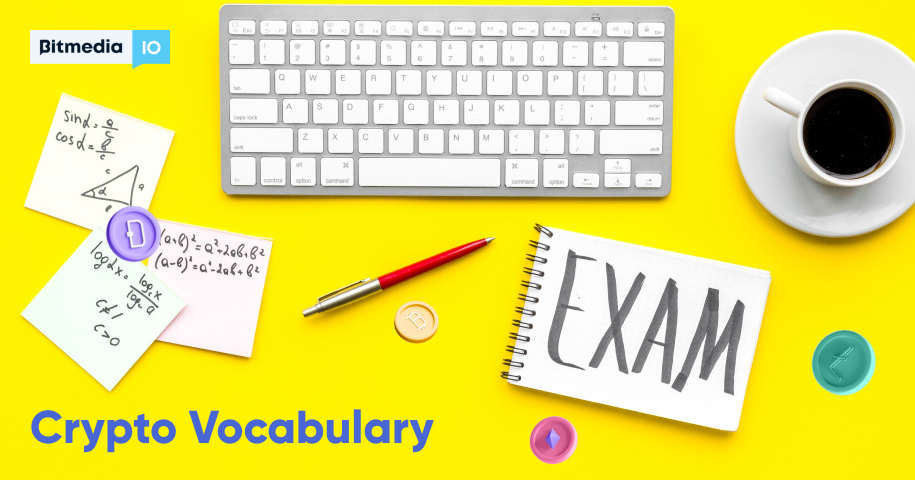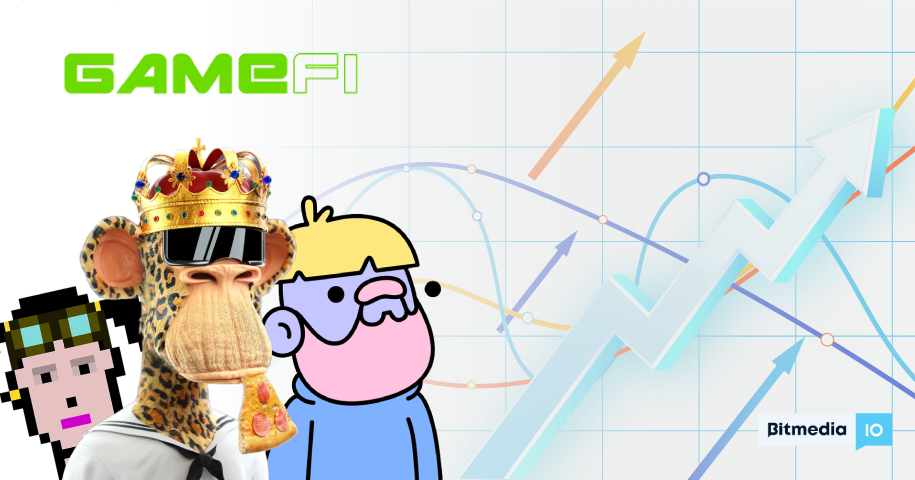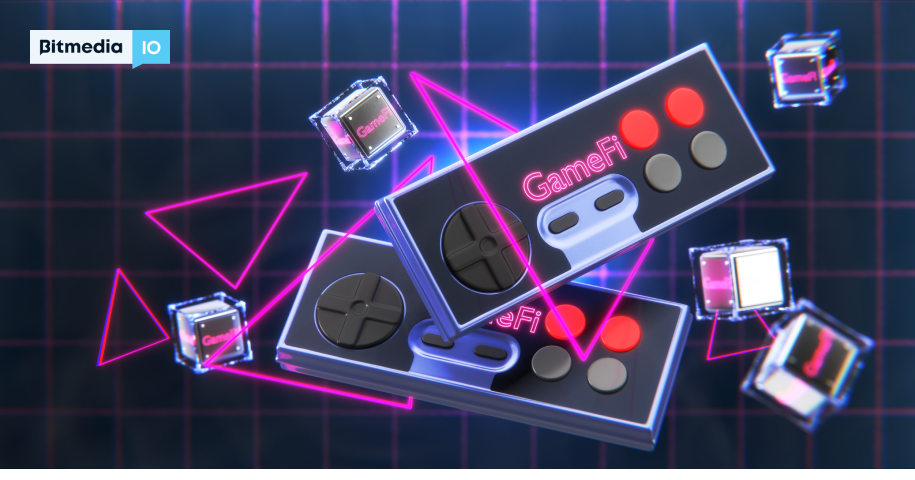GameFi Cheat Sheet — Vocab for Beginners

Many of our clients are game platforms and crypto games. With this in mind, we decided to prepare a complete list of terms used in the crypto-gaming niche, so that you could navigate around the space better than any self-proclaimed crypto guru. Our series of cheats begins with GameFi.
General introductory terms of GameFi
- What is GameFi: The word GameFi results from the merging of the words gaming and finance. It is a type of gaming that is integrated with Blockchain technology to enable players to earn financial rewards through Play-to-Earn (P2E) gaming mechanisms.
- What is Metaverse: The Metaverse refers to a digital ecosystem that is a virtual replica of the real world. It is an immersive digital environment which uses various technologies including virtual reality, augmented reality, and Blockchain technology to allow users to work, play, and be entertained but all within a virtual environment.
- What is a Crypto Game: A crypto game is a game in which players receive rewards in form of cryptocurrencies and NFTs for winning tournaments and challenges. In crypto games, players fully own their in-game assets unlike in traditional games.
- What is an airdrop: An airdrop is a transfer in which a crypto project sends free coins or tokens to the digital wallets of multiple fans as a reward or incentive to encourage more people to be part of the project.
- What is Play-to-Earn: Play-to-earn is a Blockchain-based mechanism through which gamers earn crypto and NFT rewards for playing crypto games. Play-to-earn games make it possible for gamers to get real world value for completing challenges and winning tournaments.
- What is Move-to-Earn: Move-to-earn is a type of Blockchain-based gaming system in which people earn cryptocurrency rewards for being physically active through various activities like walking, jogging, or playing sports.
- What is Learn-to-Earn: This is a Blockchain incentive mechanism where people earn crypto rewards for learning about crypto on a specific platform. Crypto platforms use learn-to-earn as a marketing strategy to popularize their coins or their exchanges.
- What is Free-to-Play: F2P or FtP games allow players to enjoy a certain level of gameplay without charges and charges are only applied for gameplay at more advanced levels of the game.
- What is Free-to-Earn: This is a crypto gaming mechanism where a player does not have to pay any money to begin playing a game but they can earn crypto rewards from that game provided they complete the required challenges.
- What is an NFT Game: An NFT game is a type of game that integrates NFT mechanics such that players are able to fully own and transfer in-game assets as well as earn rewards with real world value as redeemable tokens.
- What is a DAO: DAO stands for Decentralized Autonomous Organization and refers to Blockchain-native organizations in which power is equitably distributed among participants. That means in DAOs, everyone participates in decision making is decentralized by voting.
- What is a Roadmap: In the Blockchain universe, a roadmap is a comprehensive strategic plan that outlines the activities and events of a Blockchain project that will be carried out within a certain timeframe. The purpose of a roadmap is to provide a clear picture of how the objectives of the project will be achieved.
- What is Gameplay: Gameplay simply refers to the overall experience that gamers have when playing a game including the way they control the characters in the game, the rewards they get, the equipment they use, and the types of competition in the game.
- What is Gamification: Gamification is the strategy by which the principles and the design of gaming are integrated into business, educational, and organizational processes that are normally nongame in nature. Gamification is used as an incentive to increase participation and engagement in the said processes.
- What are Game Launchpads: Game launchpads are platforms created by new Blockchain gaming projects to give investors an early opportunity to invest in the games. In exchange, investors get a shareholding stake in those games.
- What is GameFi Ecosystem: A GameFi ecosystem simply refers to the digital gaming architecture that facilitates play-to-earn mechanics where players get crypto rewards for completing game challenges.
- What is Web 3.0: Web 3.0 refers to the third iteration of the internet that combines Blockchain and a host of other advanced technologies to give users a 3-dimensional experience of the internet. Under Web 3.0, users can make use of decentralized access to information and exercise greater control of their data because large internet entities will not hold supreme control.
- What is Prelaunch and Launch Stages of a Game: A prelaunch refers to the period of time when investors are allowed to buy the crypto tokens of a game at a discount in exchange for their early support. The official launch otherwise called the public sale is when the coins of the project are publically available for sale to everyone.
- What is game Tokenomics: Game tokenomics simply refers to how the crypto tokens in the ecosystem of a game are distributed and how those tokens are used to reward players and generate profits for the developers. Essentially, it is the economics of a token.
In-game purchases and trading games:
- Marketplace: Marketplace is a central digital store where gamers can purchase various NFTs and in-game collectibles.
- In-game Tokens: These are crypto assets used within gaming ecosystems by players to purchase items like weapons and characters to enhance gameplay.
- Utility Tokens: These are digital tokens that enable users to perform specific functions or access certain resources in a crypto-based ecosystem. For instance, utility tokens can be used to access exclusive online events of a crypto project.
- Governance Tokens: Governance tokens give participants or members of a crypto project or Decentralized Autonomous Organizations (DAOs) the right to vote on which decisions should be implemented in a project.
DeFi concepts in GameFi:
- Asset Ownership: It refers to the quality of having full rights over a particular in-game asset whether it is crypto tokens, avatars, or NFTs.
- Staking: Staking is the act of giving crypto assets to be held or locked in the custody of a crypto project for a specific period of time. After the specified period elapses, one receives an accumulated interest on the value of the assets held.
- Yield Farming: Yield farming refers to the investment process whereby crypto investors put their assets in a liquidity pool with the goal of earning interest in the form of annual percentage yields (APY). The extra interest is generated from lending out the crypto to borrowers who then repay with interest.
- Liquidity Pools: A liquidity pool is a central pool of digital tokens or cryptocurrencies secured by a smart contract. The purpose of a liquidity pool is to facilitate trading on decentralized exchanges (DEXs).
- DAO: DAO stands for Decentralized Autonomous Organization and refers to Blockchain-native organizations in which power is equitably distributed among participants. That means in DAOs, everyone participates in decision making by voting.
In-game terms:
- Avatars: These are digital images are unique digital representations of a user that are mostly generated by algorithms. Avatars enable users to navigate immersive digital environments like video games and the Metaverse where they can be used to win challenges and earn tokens.
- Game Items: Game items refer to the full range of weapons, tools, skins, and other objects that help to enrich the gaming experience for a gamer.
- Gaming Platform: A gaming platform is the combination of hardware and software infrastructure built to launch and facilitate the gameplay of a particular video game.
- Giveaway: In the world of Blockchain gaming, a giveaway refers to the distribution of free crypto and NFT assets to gamers as rewards or incentives to encourage them to start or keep playing the games.
- Skins: Skins are in-game items which are used to customize and improve the graphical aesthetic appearance of in-game characters. That way, gamers can enjoy the gameplay more as they can play using attractive and captivating characters personalized to their individual preference.
- Gear: Gear can refer to the particular set of equipment a gamer uses to play a video game including a gamepad, a gaming headset, a monitor, among other equipment. It can also refer to the clothes and weapons that an in-game character has on during gameplay.
- Loot: Loot is the whole array of valuable objects or items that a gamer collects or buys during gameplay and which increases their gaming abilities. In-game loot includes weapons, currency, or equipment.
- PvP: Player versus Player gaming is a gaming mode where real human players compete against each other within a gaming environment and not against computerized opponents.
- PvE: Player versus Environment refers to a gaming mode in which a human player competes against computerized opponents and not against another human player within the game.
Final words
This set of vocab terms is good enough to make you look like you are a Satoshi Nakamoto of GameFi. All that’s left now, is for you to take on the world of gaming and finance, for that well deserved crypto.
Join Bitmedia!

